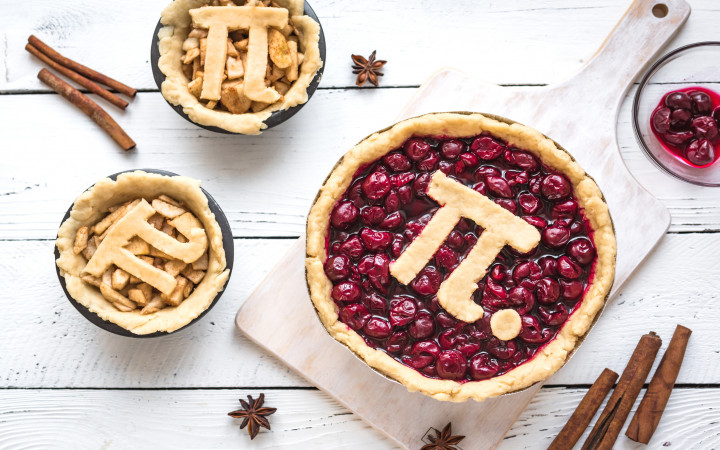Today’s Wonder of the Day was inspired by Riley. Riley Wonders, “What is Pi?” Thanks for WONDERing with us, Riley!
Before we can learn more about pi, it will help if we review a bit of geometry. In particular, we need to brush up on circles. Why? Well, we’ll get around (pun intended!) to that in a second . . .
The circumference of a circle is its perimeter, or the length around it. The distance from the center of a circle to its edge is the radius. The distance from one side of a circle to the opposite side (twice the radius) is the diameter. Finally, the area of a circle is the number of square units inside the circle.
Circles can vary in size, but they all keep the same shape. That’s how ancient mathematicians knew there had to be a special relationship between the elements of a circle. That special relationship turns out to be the mathematical constant known as pi.
What is pi? It’s the ratio of a circle’s circumference to its diameter. Regardless of the size of the circle, pi is always the same number. So, for any circle, dividing its circumference by its diameter will give you the exact same number: 3.14159 . . . or pi.
Pi is also an irrational number. That means its value cannot be expressed exactly as a simple fraction. As a result, pi is an infinite decimal. Although 22/7 gives a result that is close to pi, it is not the same number.
Since mathematicians can’t work with infinite decimals easily, they often need to approximate pi. For most purposes, pi can be approximated as 3.14159. Some people even shorten it to 3.14, which is why Pi Day is celebrated on March 14 (3/14).
Interestingly, there can be no “final” digit of pi, because it’s an irrational number that never ends. Mathematicians have also proved that there are no repeating patterns in the digits of pi.
Experts have calculated pi to over 31 trillion digits. Here are two representations of pi to different numbers of digits (past the decimal):
Pi to 10 digits: 3.1415926535
Pi to 100 digits: 3.1415926535897932384626433832795028841971693993751058209749445923078164062862089986280348253421170679
Pi is an important part of many parts of math. Most geometry students first encounter pi when they study circles. They learn that the area of a circle is equal to pi times the square of the length of the radius. This formula—A=πr2—is sometimes described as “area equals pi r squared,” which is the basis of the old joke about pies being round, not square.
Pi is represented by (and takes its name from) the Greek letter pi (π). This symbol was first used to represent pi by William Jones in 1706, because π was an abbreviation of the Greek word for perimeter: περίμετρος.
Where else have you seen pi used? Isn’t it cool that a number can have so many digits? 31 trillion and counting!
Standards: CCSS.MATH.CONTENT.7.B.B.4, CCRA.L.3, CCRA.L.6, CCRA.R.1, CCRA.R.2, CCRA.R.4, CCRA.R.10, CCRA.SL.1




